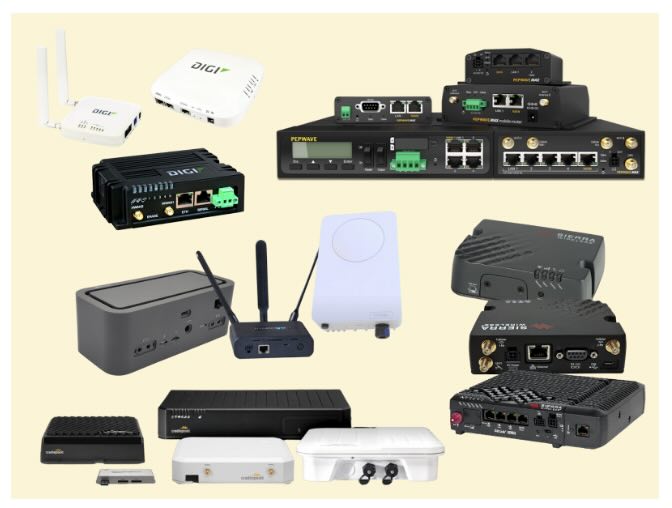



You may have heard the term “Cat” before when it comes to Ethernet cables (e.g. Cat 5, Cat 6), but what about when someone is talking about cellular? “Cat” refers to the category of a 4G LTE modem (5G does NOT use categories). 4G LTE (Long Term Evolution) is a cellular technology in which both voice and data service can operate.
Categories are used to define the performance specs of the LTE device. They range from 1 to 22 and differ with regards to the frequency band support as well as the upload and download speeds they are capable of running. For example, Cat 1 modems can download at up to 10 Mbps (megabits), while Cat 22 modems are going to receive download speeds of up to 4 Gbps (gigabits).
The Cat 19 modem not only supports more frequencies than lower categories, but more antennas also. These support 4x4 MiMO. Max throughput is 1600 Mbps down and 300 Mbps up so it is more than capable of handling multiple user streams simultaneously. This type of modem would be appropriate for larger businesses needing to support over 50 users, or small groups requiring high levels of download bandwidth.
|
LTE Category |
Max Download Speed |
Max Upload Speed |
|
10 Mbps |
5 Mbps |
|
|
100 Mbps |
50 Mbps |
|
|
150 Mbps |
50 Mbps |
|
|
300 Mbps |
50 Mbps |
|
|
300 Mbps |
100 Mbps |
|
|
600 Mbps |
75 Mbps |
|
|
600 Mbps |
100 Mbps |
|
|
800 Mbps |
226 Mbps |
|
|
1200 Mbps |
300 Mbps |
|
|
Cat 19 |
1600 Mbps |
300 Mbps |
|
2000 Mbps |
300 Mbps |
|
|
4000 Mbps |
450 Mbps |
4G and 5G are the fourth and fifth generations of mobile network technology, respectively. 4G, which is based on LTE (Long Term Evolution), offers high-speed internet access and supports a wide range of applications. 5G enhances these capabilities further, providing significantly faster speeds, lower latency, and the ability to connect a larger number of devices simultaneously.
The transition from 4G to 5G brings advancements such as improved mobile broadband services, ultra-reliable low-latency communications, and massive machine-type communications. This evolution supports emerging technologies like IoT (Internet of Things), smart cities, and autonomous vehicles, enabling innovative solutions across various industries.
5G connectivity offers numerous advantages over previous generations, including faster download and upload speeds, reduced latency, and enhanced network reliability. These benefits translate to improved user experiences, whether for personal use, business applications, or critical services like telemedicine and remote education.
Selecting the appropriate 5G router is crucial for maximizing connectivity and performance. Factors to consider include speed capabilities, compatibility with existing devices, and specific use-case requirements, such as whether the router will be used for home, business, or mobile applications.
For example, users in rural areas may require a router with a strong antenna to ensure connectivity over long distances, while urban users might prioritize speed and the ability to handle multiple devices simultaneously. Understanding these needs is essential for making an informed purchase decision.
The future of cellular technology is poised for significant advancements, particularly with the ongoing rollout of 5G and the development of 6G technology. These innovations promise to further enhance connectivity, enabling more sophisticated applications and services that rely on high-speed data transmission and low latency.
Emerging trends include the integration of artificial intelligence in network management, the expansion of edge computing, and the proliferation of IoT devices. As these technologies evolve, they will reshape industries and create new opportunities for businesses and consumers alike.
